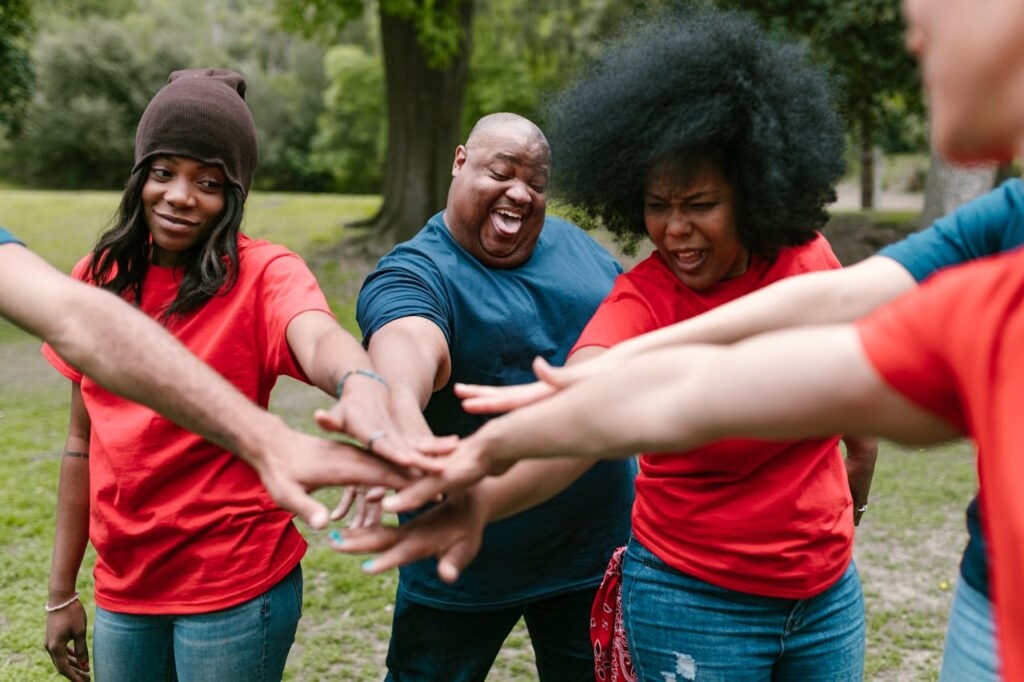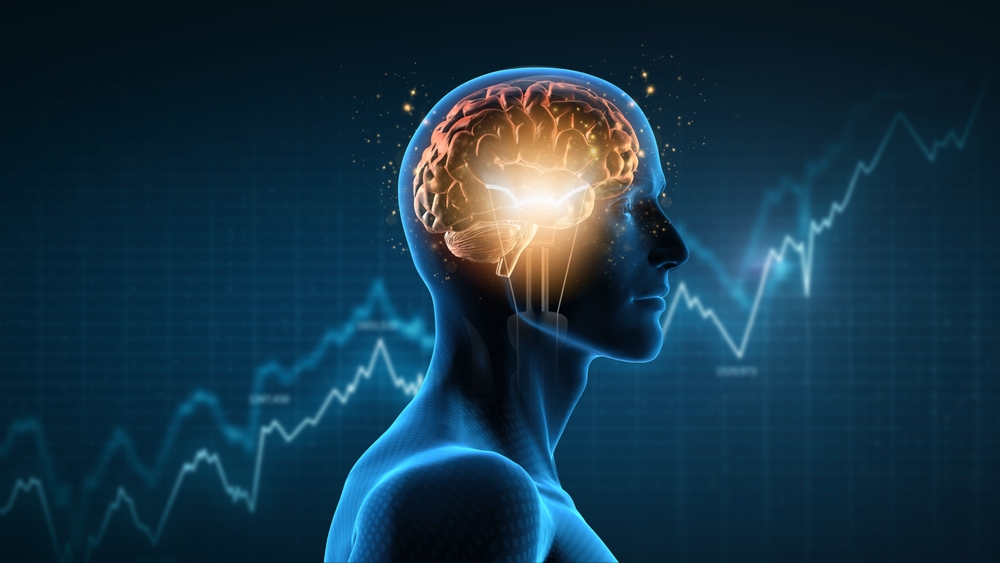Scientists Discover How Our Brains Sync When We Truly Connect With Someone

Have you ever met someone and felt an instant pull, as if you’d known them long before your first hello? The words come easily, the silences feel natural, and time seems to bend around your laughter. Something beyond logic is happening, something deeper than small talk or shared interests.

Neuroscientists say that when we truly connect, our brains begin to sync in real time. The rhythm of your thoughts, emotions, and attention starts to mirror theirs. It’s not magic. It’s the science of human connection, a silent harmony playing beneath every great conversation.
When Minds Dance in Harmony
Have you ever wondered why certain conversations feel like music? You meet someone, and your words seem to move in rhythm, your laughter lands on the same beat, and understanding each other feels effortless. It’s not just chemistry or coincidence. Science is beginning to show that something remarkable happens beneath the surface of that easy flow.
Neuroscientist Ben Rein told Big Think that “research shows that people who are better friends show more similar brain structures in these social brain areas.” This finding supports what scientists call neural homophily, the natural tendency for people with similar ways of thinking and perceiving the world to connect more deeply. In these moments, our brains don’t just communicate; they begin to align. Rein calls this interbrain synchrony, a phenomenon where two people’s brain activity literally mirrors each other. “When two people are interacting or working together or sharing an experience, their brain activity can synchronize,” Rein explained. “If you were to have those two people in a brain scanner at the same time, they would be showing nearly identical patterns of brain activity in that moment.”

What this means is that when you truly connect with someone, your brain and theirs are engaging in a kind of dance. It doesn’t happen everywhere in the brain, only in regions tied to emotion and social awareness, but that’s enough to create harmony. It’s what makes you finish each other’s thoughts, feel seen, and communicate without effort. Connection, it turns out, isn’t just emotional. It’s biological.
When Two Minds Breathe Together
There are moments in life when words are unnecessary. A glance, a smile, a touch of a hand, and suddenly you understand each other without explanation. It feels as if something invisible is connecting you. For years, people have described this as being “on the same wavelength.” Now, science is revealing that this phrase is far more literal than we once imagined.
In a 2018 study at the University of Colorado Boulder, neuroscientist Pavel Goldstein and his team observed couples as they sat side by side. Even without speaking, their brain waves began to move in rhythm. When the researchers applied mild heat to the women’s arms, the men instinctively reached out to comfort them. The moment their hands touched, the synchrony in their brain activity intensified. Goldstein found that this alignment occurred in alpha mu brain wave bands, the same frequencies tied to focus and empathy. The deeper the emotional bond, the stronger the neural harmony became.

This phenomenon reaches far beyond romance. Thalia Wheatley, a psychologist at Dartmouth College, found that close friends exhibit similar neural patterns even when simply watching the same videos. As she explained in Greater Good, “brain activity while viewing the clips was exceptionally similar among friends,” and that this similarity faded with social distance. Friends of friends showed less alignment, and strangers, even less still. Wheatley’s findings suggest that friendship is not just emotional familiarity but also biological resonance, an echo of shared perception that unites minds.
When we say we are “on the same wavelength,” it is not just an expression of chemistry or connection. It is the quiet truth that our brains, in moments of genuine understanding, begin to breathe together.
The Hidden Symphony of Connection
There are conversations that feel like breathing. You speak, they respond, and something inside you relaxes as if your minds are moving to the same rhythm. You do not think about what to say next; the words arrive at the perfect moment, carried by an unspoken understanding. What feels natural on the surface is actually a complex harmony happening beneath it.
When people connect deeply, the brain begins to coordinate its internal rhythms with the other person’s. Studies have shown that neural systems responsible for attention, emotion, and empathy begin to move in sync, creating a feedback loop that allows both individuals to read subtle cues without conscious effort. Thalia Wheatley explained in Greater Good that this alignment helps us “predict one another’s thoughts and actions,” allowing interactions to unfold with ease rather than confusion. This ability is supported by mirror systems in the brain, which activate when we observe another person’s movements or emotions, helping us feel what they feel in real time.

As this synchrony builds, emotions start to mirror too. When one person feels calm, the other often follows. When one laughs, the other joins in. Regions of the brain like the amygdala and nucleus accumbens, which regulate emotion and motivation, light up together, giving connection its deeply rewarding quality. It is not just social chemistry but a biological duet where both minds play in tune. Feeling seen and understood is less about effort and more about resonance. It happens when two human beings align their attention and emotion so completely that communication becomes not just talking, but shared awareness.
When Silence Speaks Louder Than Words
Sometimes the most powerful connection happens when no one is speaking. Two people sitting in stillness can feel more understood than hours of conversation could ever express. This isn’t coincidence. The brain continues to communicate even in silence, tuning itself to the emotional signals it receives from another person’s presence.
Research in social neuroscience has found that subtle cues like breathing rhythm, heartbeat patterns, and even micro-expressions can synchronize between individuals during moments of quiet connection. When you sit with someone you trust, your body unconsciously mirrors theirs. Your breathing slows to the same pace. Your heart rate begins to follow a similar pattern. This physiological alignment helps the brain enter a calm, receptive state where empathy deepens and emotional safety grows.

In that silence, you are not exchanging information; you are sharing energy. It is the space where judgment fades and understanding expands. It explains why some people can comfort you without saying a single word and why, in a noisy world, the quiet presence of another person can feel like medicine. True connection is not built only on words or shared experiences. It is built on awareness, presence, and the courage to simply be with another human being, without the need to fill the silence.
The Energy of Attention
Real connection begins the moment you decide to be fully present. In a world of constant distraction, attention has become one of the rarest and most powerful gifts we can offer another person. When you truly listen, not just to respond but to understand, the brain responds as if it has found safety. Neural regions tied to trust and emotional regulation become active, making both people feel seen and valued.
Researchers studying communication have discovered that focused attention changes the quality of interaction itself. Eye contact, subtle shifts in tone, and genuine curiosity send cues that invite openness. When attention is divided, these signals fade, and the brain interprets the interaction as uncertain or distant. But when attention is whole, the nervous system settles. The conversation feels natural, and authenticity emerges.
This kind of awareness is more than a social skill; it is a form of connection that reshapes the brain’s perception of belonging. Attention tells another person, “You matter right now.” It transforms small talk into dialogue and presence into connection.
The Science of the Soul
Every genuine connection we experience carries both mystery and measurable truth. The laughter shared between friends, the calm you feel beside someone who understands you, the spark of recognition when you meet a kindred spirit, all of it reflects a biological harmony that mirrors something far deeper. Science shows that our brains align, our hearts synchronize, and our emotions reflect one another in ways we can now observe. Yet what it cannot fully explain is the quiet knowing that happens when two human beings truly meet.

Connection is both data and divinity. It is the body’s way of reminding us that we were never meant to exist in isolation. When you look someone in the eye, listen without distraction, or sit in silence with full awareness, you invite your mind and theirs to move together. The next time you feel that effortless click with someone, remember that it is not just conversation. It is the mind recognizing its mirror, the heart finding its rhythm, and the soul remembering that it belongs to something greater.
Loading...

